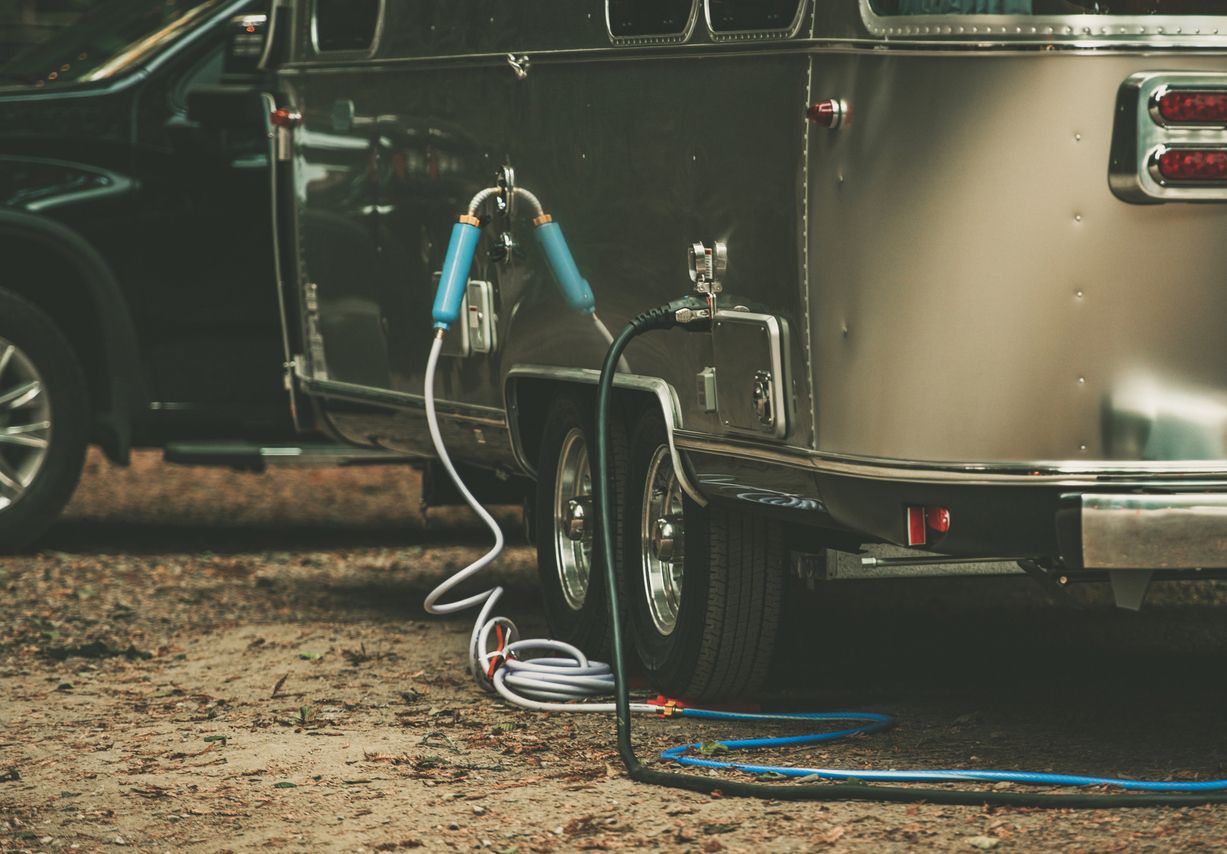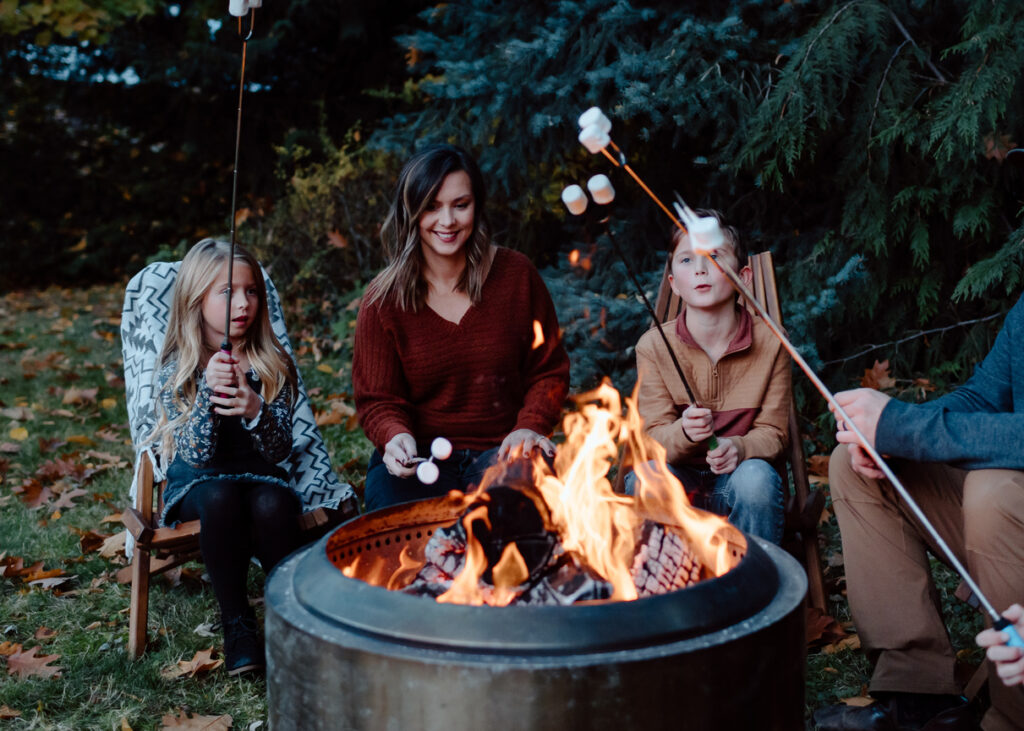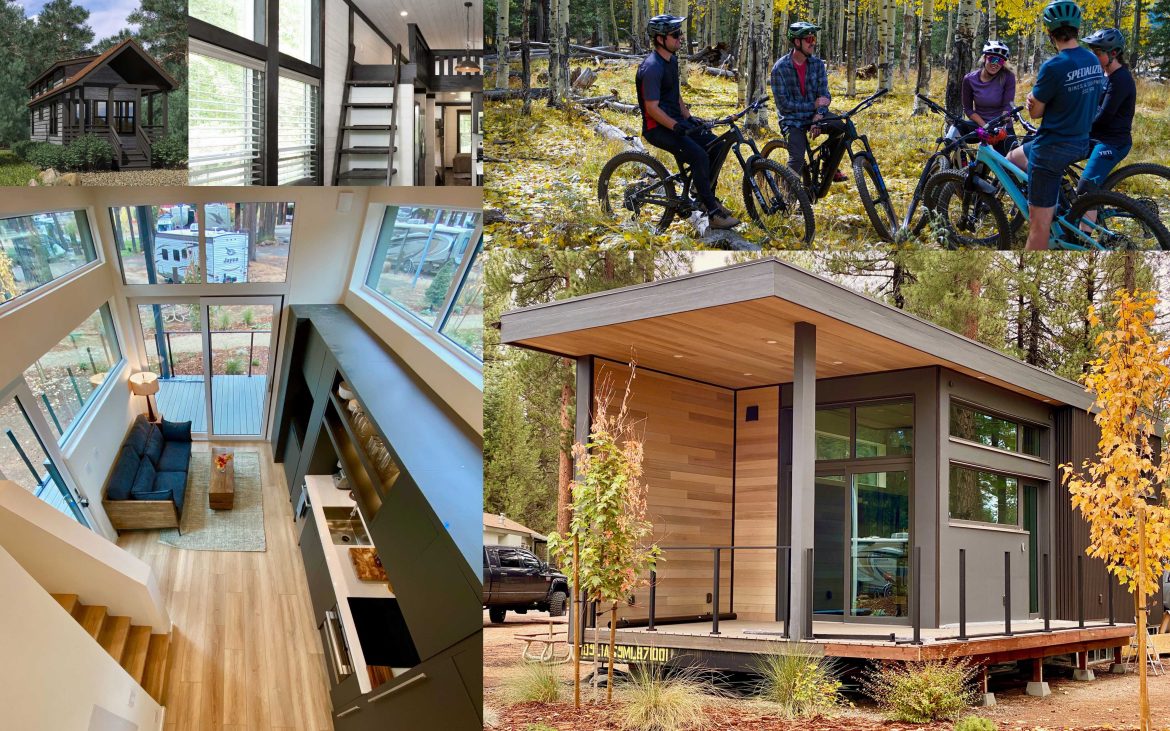So, you’ve decided to build a campground. Maybe you’ve been Googling how to build a campground for months, or maybe it’s been a long-time dream. Or, maybe you just stayed at a campground that charged $95 a night for a glorified gravel lot and thought, “I could do this so much better.” Either way, welcome to the wild, occasionally chaotic, always muddy world of campground development.
We’ll cover the nitty-gritty, like zoning, costs, layout, and even Wi-Fi (because nobody can survive without posting their s’mores pics).
By the time we’re done, you’ll have a roadmap to launch a campground map that people will rave about!
How to Build a Campground from Scratch: Where to Start
Learning how to build a campground isn’t as simple as picking a patch of land and starting a campfire. You need a solid game plan, and it all begins with zoning, market research, and land selection.
Legal and Zoning Requirements
You might be thinking…zoning laws? Yawn. We know. They aren’t exactly the most exciting part of building a campground. But they’re the first hurdle between your dream campground and a massive legal headache.
So, before you buy land, pour concrete, or even sketch out a rough layout on a napkin, check local, state, and federal zoning rules.
Different municipalities have restrictions on what kind of business (yes, this will be a business, not just your backyard dream) you can run on certain types of land. You’ll need:
- Zoning approval
- Environmental studies
- Permits for water, sewer, and other utilities
- Business licenses
Market Research: Finding Your Niche
Let’s be honest. “Market research” sounds like something a boardroom full of suits does before launching an overpriced app. But if you’re building a campground, it matters more than you think. Without it, you risk creating something no one asked for (hello, luxury treehouses in the middle of a desert).
One thing you don’t want is crickets (the bad kind—not the cheery campfire ones) chirping at your fancy new campground because you didn’t do your research. Who are your campers? What do they want? This is the “find your niche” step.
Here are a few ideas to explore:
| Campground Type | Who You’re Hosting |
| Tent-Only | Budget travelers, nature purists, and thru-hikers |
| Family-Friendly | Parents, toddlers, and lots of scooters |
| Glamping | Instagram influencers, honeymooners, people who don’t own sleeping bags |
| RV-Only | Snowbirds, road trippers, and retirees in fifth-wheels |
| Cabins | Weekend warriors, groups, and non-campers dragged along by outdoorsy friends |
Pro tip: Read reviews of local campgrounds. What do people love? What do they complain about? See the gaps and fill them.
Once you know your audience, you can make design decisions that actually make sense, like skipping the dog park if your guests will all be arriving in luxury RVs with tiny purse dogs who never touch grass.
Also, keep these demographics in mind:
- Nearly 50% of campers are Millennials and Gen Zers, with one-third of first-time campers in 2023 aged 18–34.
- Couples with children are among the most enthusiastic and frequent campers.
- Baby Boomers came out strong in 2023. They made up a big chunk of campers, jumping 19 points from the year before. Turns out, retirement looks a lot like backing up an RV and cracking a cold one by the fire.
eBook: Meet Your Campers of the Future
Showcasing the top 3 grow profiles to target and sharing insights on how to attract these keen campers regardless of budget or location.


Land Selection: What to Look for in a Great Site
Once you’ve nailed down who your campers are, the next step in how to build a campground is finding the perfect patch of land. This is where dreams meet dirt—literally. And not all dirt is created equal.
When it comes to choosing a slice of paradise for your campground, keep a few things in mind:
- Accessibility: Is the land reachable by car, and is it within a reasonable distance from popular attractions?
- Natural Appeal: Are there trees, lakes, or mountain views to entice campers?
- Terrain: Flat land is ideal for RVs, while hilly areas might be better suited for glamping pods or cabins.
- Size: A larger property gives you flexibility for future expansion.
Scout locations in person. What looks good in photos might not hold up when you’re knee-deep in weeds or dealing with rocky terrain.
How Much Does It Cost to Build a Campground?
One of the biggest questions people ask when learning how to build a campground is, “How much is this going to cost me?”
The answer depends on your location, utilities, terrain, and the type of campground you want to create. These estimates provide a general overview; actual costs can vary based on location, material choices, labor rates, and specific design requirements.
Average Cost Range for Different Types of Campgrounds
| Type of Campground | Average Cost Range | Key Features |
| Tent-Only | $3,000 to $15,000 per site | Basic infrastructure like walkways, fire pits, and communal amenities. |
| RV Parks | $20,000 to $50,000 per site | Full utility hookups (water, sewage, electricity), roads, and larger spaces. |
| Glamping | $50,000 to $200,000 total | Luxury structures like yurts, safari tents, or domes, plus high-end bathrooms. |
| Cabins | $50,000–$200,000+ per structure | Cost depends on size, materials, and included amenities. |
* costs may vary from location and a variety of other factors
Key Cost Categories
Your grand vision will likely include:
- Land acquisition: Larger plots or prime locations are pricier but worth it if they attract your target audience.
- Permits and fees: These may total thousands, depending on regulations in your area.
- Infrastructure: Roads, parking, utilities, and septic systems will likely be your largest line item.
- Marketing: Building a website, creating social media ads, and launching promotions to drum up interest before opening
What Affects the Price
Several variables will impact your total cost:
- Size: Bigger properties need more roads, more utilities, and more time. The cost-per-site can shrink with scale, but only if your land is easy to work with.
- Location: Want land near Yellowstone? Get ready to pay a premium. But also know you can charge more per night, so it’s not always a bad tradeoff.
- Terrain: Rocky soil, steep slopes, or dense forests make everything harder and more expensive. Flat land with good drainage is your best bet.
- Utilities: If you can hook up to city water, sewer, and electricity, you’ll save thousands in installation and maintenance. If you’re totally off-grid, you’ll need to invest in wells, septic, propane, solar, or generators, each with upfront and long-term costs.
- Amenities: The moment you add a dog park, splash pad, pool, or bathhouse, you’ve officially stepped into serious-money territory. Great amenities attract guests, but they require a serious investment.
RV-Specific Considerations

If you’re figuring out how to build a campground that welcomes RVers, buckle up. There’s a little more to it than “flat land and plug-ins.” RVers are a unique bunch.
They’re road-savvy, gear-heavy, and very opinionated about things like dump stations and pad angles. If you get their needs right, they’ll reward you with glowing reviews, return visits, and maybe even drone footage of your campground from 200 feet in the air.
Site Planning
Unlike tent campers, RVers are bringing their entire house with them. That means you need to ensure they can get into your park without scraping the trees, taking out your fence, or backing into someone’s Subaru.
- Space requirements: Big rigs need wide turns and large spots. Think 60–80 feet per site.
- Full hookups: That means electric, water, and sewer at every site. Most RVers expect at least 30/50 amp service.
- Pull-through vs. back-in: Pull-throughs are gold for convenience but need more space and thoughtful design. Back-in sites are more space-efficient and often more scenic, but they require confident drivers and enough room for maneuvering. A mix of both is usually your best bet.
Electrical, Water, and Dump Station Infrastructure
- Coordinate with electric companies early. Larger campgrounds may require upgraded transformers or even new lines. This is one of the biggest (and sneakiest) budget items, so plan ahead.
- If you live in a colder climate, install water lines with winterization in mind. Frozen pipes = angry campers.
- Build a dump station, even if every site has sewer hookups. Some RVers will use it just before they leave, and tent campers or van lifers may need it, too.
How to Design and Build a Campground
Once you cross your T’s in legalities and finances, the fun part begins.
Layout Considerations
A well-thought-out layout offers smooth traffic flow. Consider separate entrances and exits, ensuring roads are wide enough for RVs and trailers.
Campers appreciate privacy, so think about spacing the sites generously or including natural buffers like trees and hedges. Accessibility should also be a priority, with paths and amenities accommodating everyone.
Incorporating Nature
One way to make your campground stand out is by keeping it “natural but polished.” Use existing trees where possible rather than cutting them down, and design sites to work with the contours of the land. If your property offers great views or water access, design common areas to highlight them.
Are you in a region with distinct seasons? Capitalize on that too. Views of fall foliage, spring wildflowers, or snow-covered woods can all be part of the appeal.
Planning for Amenities
A well-placed amenity can turn a good stay into a great one. It can also be a key differentiator when guests scroll through search results, trying to pick between “That Place with Trees” and “That Place with Trees and a Dog Park.”
Here’s how to think about what to include:
- Playgrounds: If families are part of your target audience, you need a solid play area. Swings, slides, and a shaded bench for exhausted parents? Gold.
- Dog parks: Pet-friendly policies are a huge benefit, but leash-free zones take it to the next level. Also, consider a fenced-in dog area.
- Hiking or walking trails: If you’ve got the land, add marked paths. They don’t need to be National Park-worthy. Just make sure they’re safe, scenic, and quiet.
- Wi-Fi: Yes, even in nature, people want internet. Whether it’s remote workers, full-time RVers, or someone trying to stream Netflix after a hike, fast and reliable Wi-Fi can be a major perk. (Just make sure you advertise it honestly. “Patchy near the creek” is better than promising full bars and delivering frustration.)
Construction and Launch

You’ve mapped out your dream. You’ve got the land. You’ve fought the zoning board and hopefully, won. Now it’s time to build.
Here, we break down the nuts and bolts of how to build a campground.
Hiring Contractors
Unless you’re secretly a licensed electrician, plumber, builder, and road grader rolled into one, you’ll need help. A lot of it. That means hiring skilled contractors.
Find experienced contractors who understand campground infrastructure. Be picky, and review their references. A great contractor will keep your project on time and on budget, while a bad one can cause delays and extra costs.
Building in Phases vs. All at Once
When you’re figuring out how to build a campground on a limited budget or you’re not sure how fast it’ll take off, building in phases can be a smart move.
You can start small and grow based on guest feedback. For example, you could begin with tent sites and utilities and later add glamping pods and RV spots.
But if you’ve got the budget and the confidence in your concept, constructing all at once has its appeal. This get-it-done approach can make a strong market debut and establish your campground as fully functional from day one
Building your entire vision in one go means campers get the full experience from the start..
Setting Up Booking and Payment Systems
First things first, you’ll need a reservation system that’s easy for guests to use. But then you’ll also need a versatile solution to take payments, including online and in-person.
Newbook’s all-in-one solution was designed with this in mind. Our booking software is customizable to your campground’s needs, and includes features such as a virtual map so guests can filter through different features (i.e., campsites closest to the lake, bathrooms, or the most secluded spots) to find the perfect campsite. In addition, Newbook payments gives them the opportunity to pay immediately online, and allows you to set up scheduled payments for long-term guests.
eBook: Optimize Online Presence & Convert More Bookings
Unlock our expert tips to optimize your digital strategy through OTAs and social media, and boost conversions on your direct booking engine.


Soft Opening and Marketing Tips for the Launch
Before you throw the gates wide open and hope for five-star reviews, do a soft opening. Invite friends, family, trusted locals, or even a few influencers to stay at a discount (or for free) in exchange for honest feedback and fresh eyes on your setup.
Use this trial run to:
- Stress-test your water, sewer, and electric systems
- Fine-tune your check-in process
- Identify confusing signage or missing amenities
- Collect marketing assets—photos, testimonials, and user-generated content
Once you’ve ironed out the kinks, it’s time to get the word out. Here’s your opening-week campground marketing checklist:
- Claim your Google Business Profile and optimize it with photos, descriptions, and accurate hours.
- Set up social media accounts and post behind-the-scenes progress from construction to launch.
- List your campground on platforms like Campendium, The Dyrt, and Hipcamp.
- Send a press release to local news and tourism boards.
- Run a limited-time promo like “First 25 campers stay for $25/night” to create buzz.
And always, always encourage reviews. A handful of glowing Google and Hipcamp reviews can potentially drive more bookings than a $1,000 ad campaign.
Final Thoughts on Building a Campground
Building a campground is no small feat, but it can be a rewarding experience for those willing to put in the time and effort.
Whether you’re picturing a cozy tent-only retreat, a full-blown RV park, or a glamping haven, there’s a lot to plan, build, and budget for. It’s not for the faint-hearted, but it’s also rewarding. There’s nothing quite like seeing campers enjoy a space you brought to life.
By following this guide, you’ll be better prepared to tackle the process without unnecessary stress. Take it one step at a time, keep your budget in check, and don’t forget to prioritize what your target audience considers most valuable.
If you’re ready to bring your vision to life, start solidifying your budget, scouting land, and mapping out the design. A world of happy campers is within reach!
Want to keep guests happy and operations running smoothly from day one?
Contact Newbook today to learn how our property management software can help you run your park like a pro.
So you manage a campground? We make it easy
Newbook is your all in one campground management software. Talk to us today to learn how you can improve operations and increase bookings for your campground.



